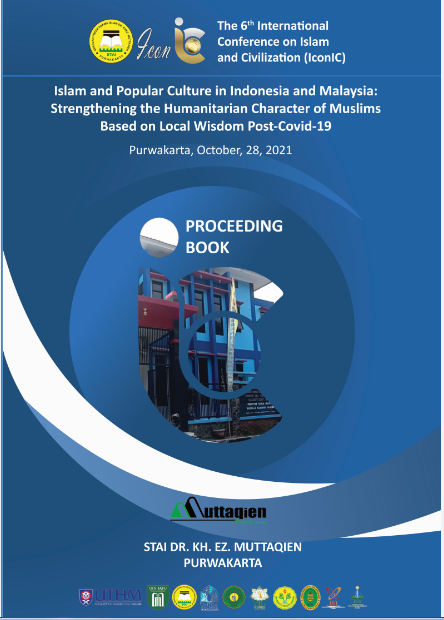The Influence of The Educational Tool Of Fishing On The Ability To Classific Size And Color in Children Aged 5-6 Years
Keywords:
Fishing Game Educational Tool, Early Childhood, Ability to Classify Size and Color.Abstract
This research is motivated by school education during the pandemic. Where preschool children experience learning that is not following their age. Learning during the pandemic, children learn by telephone sometimes hold face-to-face but not optimal when studying. So that it attracts the attention of researchers to provide a learning method through play. The purpose of this study was to develop an educative game palate for the ability to classify sizes and colours in children aged 5-6 years. This study uses a quantitative approach with a quasi-experimental form. (Quasi Experimental Design). The data collection technique used purposive sampling. The research population of group B students at RA Miftahul Jannah was 58 students. Based on the researchers' observations, data were obtained that 1) Learning during the pandemic was short, so the learning time was not optimal. 2) the ability to classify size and colour in children aged 5-6 years at RA Miftahul Jannah is low and moderate. 3) Lack of educational game tools that support learning tools to classify sizes and colours. The theory used by researchers in this problem is the theory of classifying by Rini Hildayani, namely according to Rini Hildayani explaining the notion of classifying ability, namely the ability to select and classify objects based on their similarities, for example, classifying objects according to their shape, classifying objects according to the colour of the object. 2) the ability to classify size and colour in children aged 5-6 years at RA Miftahul Jannah is low and moderate. 3) Lack of
educational game tools that support learning tools to classify sizes and colours. The theory used by researchers in this problem is the theory of classifying by Rini Hildayani, namely according to Rini Hildayani explaining the notion of classifying ability, namely the ability to select and classify objects based on their similarities, for example, classifying objects according to their shape, classifying objects according to the colour of the object. 2) the ability to classify size and colour in children aged 5-6 years at RA Miftahul Jannah is low and moderate. 3) Lack of educational game tools that support learning tools to classify sizes and colours. The theory used by researchers in this problem is the theory of classifying by Rini Hildayani, namely according to Rini Hildayani explaining the notion of classifying ability, namely the ability to select and classify objects based on their similarities, for example, classifying objects according to their shape, classifying objects according to the colour of the object. In this study, the researchers concluded that there was a significant effect by using a fishing rod game on the ability to classify sizes and colours, namely the researchers obtained data from the T-test results that in the pretest implementation, the data obtained were 65.15, and the posttest data was 104.


